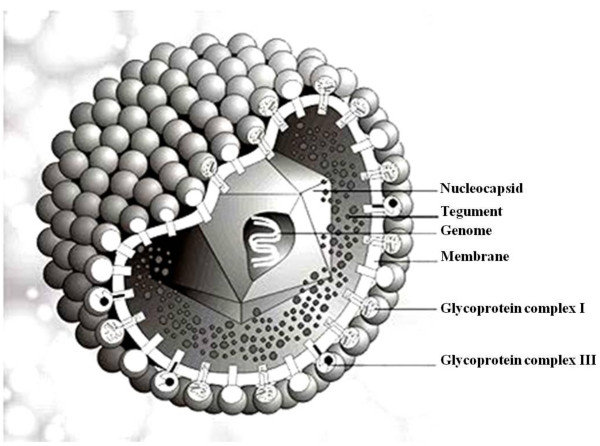views

Cytomegalovirus Antigens
Cytomegalovirus, often called as CMV, is a genus of viruses in the order Herpesvirales, in the family Herpesviridae, in the subfamily Betaherpesvirinae. It is related to other herpesviruses within the subfamilies of Alphaherpesvirinae that includes herpes simplex viruses 1 and 2 and varicella-zoster virus, and the Gammaherpesvirinae subfamily that includes Epstein–Barr virus. Monkeys and human beings serve as natural hosts which play an important role in CMV's life cycle. As we know, human CMV (HCMV, human herpesvirus 5, HHV-5) is the most studied of all cytomegaloviruses because this species infects humans and associate with different diseases including pneumonia and glandular fever.
CMV is a double-strand DNA virus, with icosahedral, Spherical to pleomorphic, and Round geometries, and T=16 symmetry. Figure 1 shows the structure of the CMV virion.
 Fig. 1 Structure of Cytomegalovirus (Tomtishen III J, 2012)
Fig. 1 Structure of Cytomegalovirus (Tomtishen III J, 2012)
Figure 1 indicates that CMV enveloped with an outer membrane, different glycoprotein chimerized in it. Those glycoproteins conduct the infection or release of genetic substance of virus. Entry of CMV into cells requires the conserved glycoprotein B (gB), thought to function as a fusogen and reported to bind signaling receptors. gB also elicits a strong immune response in humans and induces the production of neutralizing antibodies although most anti-gB Abs are non-neutralizing. In addition to CMV cell surface protein glycoprotein B (gB), CMV utilizes several other glycoproteins to infect cells. The pentameric complex (PC), composed of gH, gL, UL128, UL130, and UL131A, is essential for CMV entry into many hosts cell types, including epithelial cells, endothelial cells, and macrophages.
CMV's replication is nuclear and lysogenic. Figure 2 is life cycle of CMV in a human cell. CMV gets through the cell membrane by using its viral glycoproteins to capture the host receptors which located in the surface of host cells. Those receptors mediate a process of endocytosis, and after CMV gets into cells, it will start a replication of double-strand DNA in a bidirectional copy model: DNA templated transcription, accompanying some alternative splicing mechanism is the method of transcription. Translation takes place by leaky scanning. The virus exits the host cell by nuclear egress, and budding.
 Fig. 2 Life cycle of Cytomegalovirus (Crough T and Khanna R. 2009)
Fig. 2 Life cycle of Cytomegalovirus (Crough T and Khanna R. 2009)
Although CMV spreads directly through contacting of body fluids, such as blood, saliva, urine, vaginal fluids, and breast milk, most healthy people don't undergo any symptoms when infected with CMV and it doesn't experience a serious health concern. Most adults have antibodies against CMV after them recovering from past infection.
References
- Tomtishen III, J. (2012). Human cytomegalovirus tegument proteins (pp65, pp71, pp150, pp28). Virology Journal, 9(1), 22.
- Crough, T.; Khanna, R. (2009). Immunobiology of Human Cytomegalovirus: from Bench to Bedside. Clinical Microbiology Reviews, 22(1), 76–98.





















Comments
0 comment